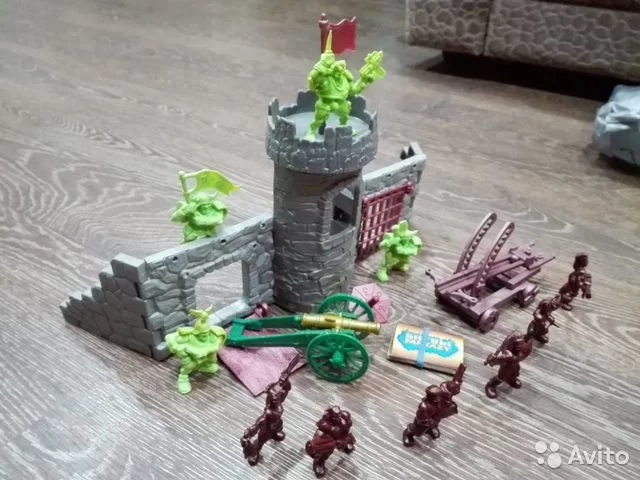I was the first kid in class to have a PC at home. It was 1995, and most of the children in the periphery of southern Russia had been getting their dose of digital entertainment from a Chinese copy of NES called Dendy. But video games weren’t the only go-to place to spend free time. Looking back, it seems I’ve been quite a busy kid—playing Space Quest 5 on PC and Contra on Dendy Junior took just a fracture of my non-school activities. Socializing with friends outdoors was a thing back then, and searching for new ways to achieve neat cuts and bruises from climbing every climbable surface was a time-consuming business. Nevertheless, more than everything in the world, I loved to play with my «robots.» It was a general term to describe all kinds of toy soldiers and action figures my parents spoiled me with, despite being just slightly less poor than everybody else in 90s Russia.

Retrospectively, the most awesome among them were Soviet tin soldiers. I had lots of them. Most of them were standing at attention, but some were holding their guns ready to shoot, and there was even a field nurse with a first aid kit bag on her shoulder. More modern plastic soldiers accompanied the old-school Soviet ones in the battles, and heinous creatures, half-animals, half-robots, were regular guests on the battlefield. Latter ones were exceptionally trendy among children due to their low price and hip looks.
Every figurine, every soldier, and every toy was somewhat special for me. They weren’t merely a tool for constructing epic battles—they were actors through whom dramas of human relations could be channeled. Warfare, fighting, and destruction were just a part of the setting and not the primary means for achieving fun. I’ve constructed simple but strong enough plotlines, full of love, camaraderie, betrayal, and tragedy, that filled my heart with emotions that could have brought me to tears. The power of immature but rich imagination made me a demigod—a creator and an audience simultaneously, the ouroboros of creativity.

A couple of years later, in 1997 or 1998, mom bought me a gracious addition to the troupe of my private theatre. It was a kit of the new series of toys that older kids called wargames. Indeed, «Fantasy Battles» was the first Russian wargame destined to become popular when most Russian kids had never heard of Warhammer. The kit consisted of several figurines of soldiers, a couple of siege weapons (ballista and canon), and a whole goddamn fort with a tower and walls and all. It was the pure joy of a package.
Additionally, there were rules. Players had to take turns, throw dice (or was it a spinning top with numbers on it?), and take actions using cards. I’ve tried to play by the rules once and never bothered again. It was too formulaic, too dry, too lifeless. So I enrolled the fort and the soldiers and the siege weapons into my usual ensemble of theatrical epicness, remorselessly forgetting about the cards and the rules and the dice (or was it a spinning top with numbers on it?).

I’ve approached PC games in the same manner. My dad loved Dune 2, Civilization, and Heroes of Might & Magic, while I preferred point-and-click adventures. It was not enough story for me in strategy games of the time, and I fell in love with the genre only a bit later, when Warcraft 2 found its way to my hard drive—rather, its map editor. It was a game changer. A digital computer game has become a new stage for my one-person theater. Starcraft, Heroes of M&M 3, Age of Empires, Saga: Rage of the Vikings—I’ve spent more time in their map editors than playing the games themselves. Most of the maps I created didn’t even have an AI adversary—I was happy to play a digital version of tin soldiers.
Eventually, my creative imagination became more boring and self-conscious as I grew older, and my need to consume stories and experience emotions became more nitpicky. The mechanic side of gaming began to interest me more than before, up to the point when I tested the waters in multiplayer. Not for long, though. Stripped-down mechanics bore me to death, and their attractiveness evaporates fast without a vivid narrative to serve as a solid foundation.
There is no need to be a self-sufficient demigod anymore—I’m too old for that. I gave up on map editors, but the single-player aspect of any strategy game is still the most important for me. And it better not be a mere skirmish mode even with the most capable AI in history. A story, a narrative, a tragedy. Emotions. I don’t care about mechanical balance, competitiveness, APMs, or whether AI is challenging or not. Give me more stories like Artas and Kerrigan, more stupidly over-the-top characters like Kane and Yuri, and more narrative playgrounds like Crusader Kings 2. Challenge me with emotional stakes and not with mere numbers and calculations.
Build me a stage to witness a theater of human drama, and I’ll be glad to spend my time investing in the mechanic intricacies. Whether it’ll be dice or a spinning top with numbers on it.


One response to “Why I Love Strategy Games. But Not All Strategy Games.”
[…] wrote previously that game mechanics are not the most important thing for me in strategy games. It’s great when […]
LikeLike